| << Chapter < Page | Chapter >> Page > |
The region is shown in the following figure. Evaluate the double integral by using the easier order of integration.
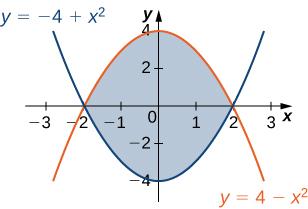
The region is given in the following figure. Evaluate the double integral by using the easier order of integration.
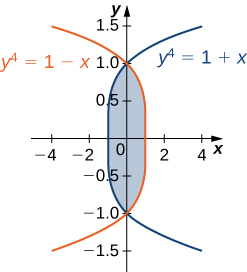
Find the volume of the solid under the surface and above the region bounded by and
Find the volume of the solid under the plane and above the region determined by and
Find the volume of the solid under the plane and above the region bounded by and
Find the volume of the solid under the surface and above the plane region bounded by and
Let be a positive, increasing, and differentiable function on the interval Show that the volume of the solid under the surface and above the region bounded by and is given by
Let be a positive, increasing, and differentiable function on the interval and let be a positive real number. Show that the volume of the solid under the surface and above the region bounded by and is given by
Find the volume of the solid situated in the first octant and determined by the planes
Find the volume of the solid situated in the first octant and bounded by the planes
Find the volume of the solid bounded by the planes and
Let and be the solids situated in the first octant under the planes and respectively, and let be the solid situated between
Let be the solids situated in the first octant under the planes and respectively, and let be the solid situated between
a. b. c.
Let be the solids situated in the first octant under the plane and under the sphere respectively. If the volume of the solid is determine the volume of the solid situated between and by subtracting the volumes of these solids.
Let and be the solids situated in the first octant under the plane and bounded by the cylinder respectively.
a. b. c.
[T] The following figure shows the region bounded by the curves and Use a graphing calculator or CAS to find the -coordinates of the intersection points of the curves and to determine the area of the region Round your answers to six decimal places.
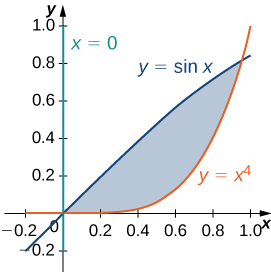
[T] The region bounded by the curves is shown in the following figure. Use a graphing calculator or CAS to find the x -coordinates of the intersection points of the curves and to determine the area of the region Round your answers to six decimal places.
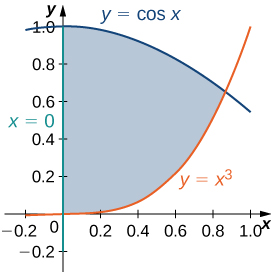
Suppose that is the outcome of an experiment that must occur in a particular region in the -plane. In this context, the region is called the sample space of the experiment and are random variables. If is a region included in then the probability of being in is defined as where is the joint probability density of the experiment. Here, is a nonnegative function for which Assume that a point is chosen arbitrarily in the square with the probability density
Find the probability that the point is inside the unit square and interpret the result.
Consider two random variables of probability densities and respectively. The random variables are said to be independent if their joint density function is given by At a drive-thru restaurant, customers spend, on average, minutes placing their orders and an additional minutes paying for and picking up their meals. Assume that placing the order and paying for/picking up the meal are two independent events and If the waiting times are modeled by the exponential probability densities
respectively, the probability that a customer will spend less than 6 minutes in the drive-thru line is given by where Find and interpret the result.
there is a chance that a customer will spend minutes in the drive-thru line.
[T] The Reuleaux triangle consists of an equilateral triangle and three regions, each of them bounded by a side of the triangle and an arc of a circle of radius s centered at the opposite vertex of the triangle. Show that the area of the Reuleaux triangle in the following figure of side length is

[T] Show that the area of the lunes of Alhazen , the two blue lunes in the following figure, is the same as the area of the right triangle ABC . The outer boundaries of the lunes are semicircles of diameters respectively, and the inner boundaries are formed by the circumcircle of the triangle
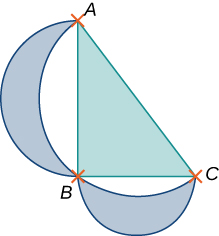

Notification Switch
Would you like to follow the 'Calculus volume 3' conversation and receive update notifications?